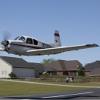Auto-Lean clearance sale
-
Members Online
- eman1200
- pkellercfii
- Glen Davis
- N201MKTurbo
- redbaron1982
- GeeBee
- richardbrochu27
- rickseeman
- EricJ
- LANCECASPER
- Paul Thomas
- bcg
- TCC
- ed
- N201RR
- joepilotmooney
- mgtrevor
- FlyingDude
- hammdo
- Fritz1
- theoriginalturk
- Zorro
- Chris newton
- Zippy_Bird
- Neshi
- Kelpro999
- tbone40x
- FlyingScot
- Grumpy
- lanejacobs84
- Jake@BevanAviation
- Danb
- atpdave
- Nico1
- kowabunga


Recommended Posts
Join the conversation
You can post now and register later. If you have an account, sign in now to post with your account.